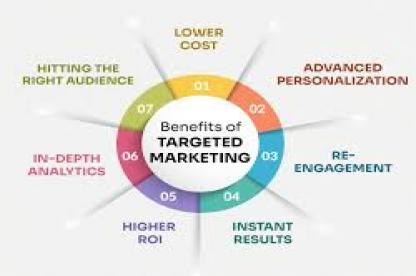
- 10 June 24
Maximizing ROI, Strategies for Effective Ad Placement
In today’s competitive advertising landscape, getting the most out of your ad spend is essential. Maximizing your return on investment (ROI) requires a deep understanding of ad placement strategies. Where and how you place your ads can significantly impact their effectiveness. This article explores key strategies to optimize ad placement, ensuring you reach the right audience and maximize your ROI.
Understanding the Importance of Ad Placement
Ad placement refers to where your ads appear across different platforms, whether it's on websites, social media, or within apps. Proper ad placement is critical for ensuring your message reaches the right audience at the right time. The more relevant your ads are to the viewers, the higher the chances of engagement, conversions, and ultimately, a better ROI.
To maximize the impact of your ads, you need to align your placements with your target audience’s habits and preferences. A well-placed ad can dramatically increase visibility and conversion rates, while poor placement can lead to wasted budget and low engagement.

Leverage Data for Strategic Placement
One of the most effective ways to maximize ROI is by using data-driven insights. Analyzing user behavior, demographics, and previous campaign performance can provide invaluable information for refining your ad placements.
Use tools like Google Analytics, Facebook Insights, and other ad platforms to understand where your audience is most active. These platforms offer in-depth data on user interactions, helping you identify the best-performing channels. Based on this data, you can make informed decisions about where to allocate your ad budget for optimal results.
Focus on Programmatic Advertising
Programmatic advertising has changed the game when it comes to ad placement. This automated process uses AI and real-time bidding to place ads in front of the right audience, at the right time, and in the right context. Programmatic ads allow businesses to target specific demographics and interests, increasing the chances of engagement.

By utilizing programmatic advertising, brands can save time and resources while achieving better targeting precision. This helps reduce ad waste and boosts ROI by ensuring your ads are seen by those who are most likely to convert.
Choose the Right Platforms
Not all advertising platforms are created equal. Some platforms may deliver better results depending on your target audience, product, and campaign objectives. Identifying the right platform is crucial for maximizing your ad placement's effectiveness.
Social media platforms like Facebook, Instagram, and LinkedIn are ideal for businesses that want to reach a broad, engaged audience. Search engines like Google offer powerful ad placement opportunities through search ads and display networks. Each platform has its unique strengths, so selecting the ones that align with your campaign goals is key.
For example, if your target audience spends a lot of time on Instagram, you’ll want to focus your efforts on Instagram ads. On the other hand, if you’re targeting professionals or B2B clients, LinkedIn may be a more effective platform.

A/B Testing for Better Results
Testing is an essential component of any successful ad placement strategy. A/B testing allows you to compare different versions of your ads and placements to determine which ones perform better. This could include testing different headlines, images, or even placement locations to see which generates the best results.
By continually testing and optimizing your ads, you can refine your strategy over time. This approach helps you identify the most effective placements and ad formats, leading to higher conversion rates and improved ROI.
Contextual Targeting
Contextual targeting is another powerful strategy for maximizing ROI. It involves placing ads based on the content of the page where the ad appears. For example, an ad for hiking gear would perform better on a blog about outdoor activities than on a general news site.
By aligning your ads with relevant content, you increase the likelihood that users will engage with them. This not only improves the effectiveness of your ad but also boosts your overall campaign performance by reaching users who are already interested in related topics.
Optimize for Mobile
Mobile usage has overtaken desktop, and more users are interacting with ads on their mobile devices. Therefore, optimizing your ad placements for mobile is crucial to maximizing ROI. Mobile-optimized ads should be visually appealing, quick to load, and easy to interact with.
Mobile placements often perform best when they are short, engaging, and interactive. Focus on delivering concise messaging that captures attention quickly, as users tend to scroll rapidly on mobile devices. Ensuring that your ads are mobile-friendly will lead to higher engagement rates and, ultimately, a better return on investment.

Geographic and Demographic Targeting
Targeting specific geographic areas and demographics can dramatically improve your ad placement’s effectiveness. By narrowing down your audience based on location, age, income, and other factors, you increase the relevance of your ads.
Geographic targeting is especially useful for local businesses or campaigns with location-based offers. Demographic targeting ensures that your ads are seen by individuals who are more likely to convert, thus improving your ROI. This approach prevents wasted ad spend by filtering out irrelevant audiences.
Timing Matters
Ad placement timing is another critical factor in maximizing ROI. Ads placed at the right time can generate more engagement and conversions. Analyze your audience's activity patterns to determine when they are most likely to be online.
For example, if you know your audience tends to be more active in the evenings, schedule your ads to appear during those hours. Many ad platforms allow you to schedule placements to ensure that your ads are shown during peak engagement times. Proper timing ensures that your ads reach your audience when they are most receptive, leading to better results.
Conclusion
Maximizing ROI through effective ad placement requires a thoughtful, data-driven approach. By leveraging the right platforms, utilizing programmatic advertising, optimizing for mobile, and targeting the right audience, businesses can significantly boost their ad performance. A/B testing, contextual targeting, and proper timing also play crucial roles in ensuring your ads deliver the best results.
Staying proactive, analyzing data, and continually refining your strategy are key to optimizing your ad placements. When done correctly, effective ad placement can drive higher engagement, increased conversions, and a stronger return on your marketing investment.



